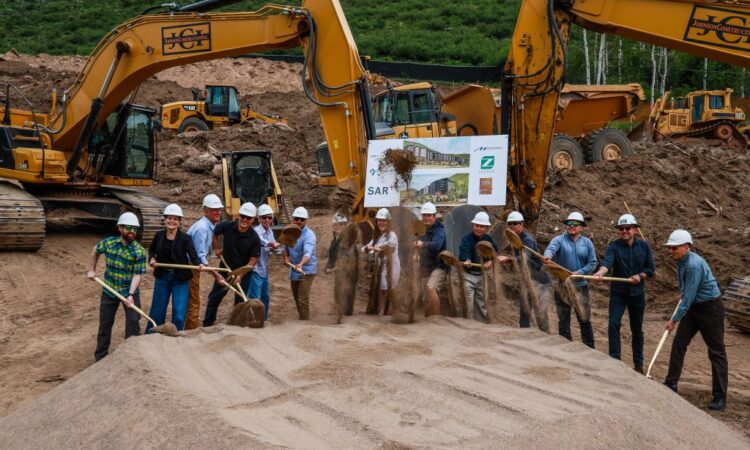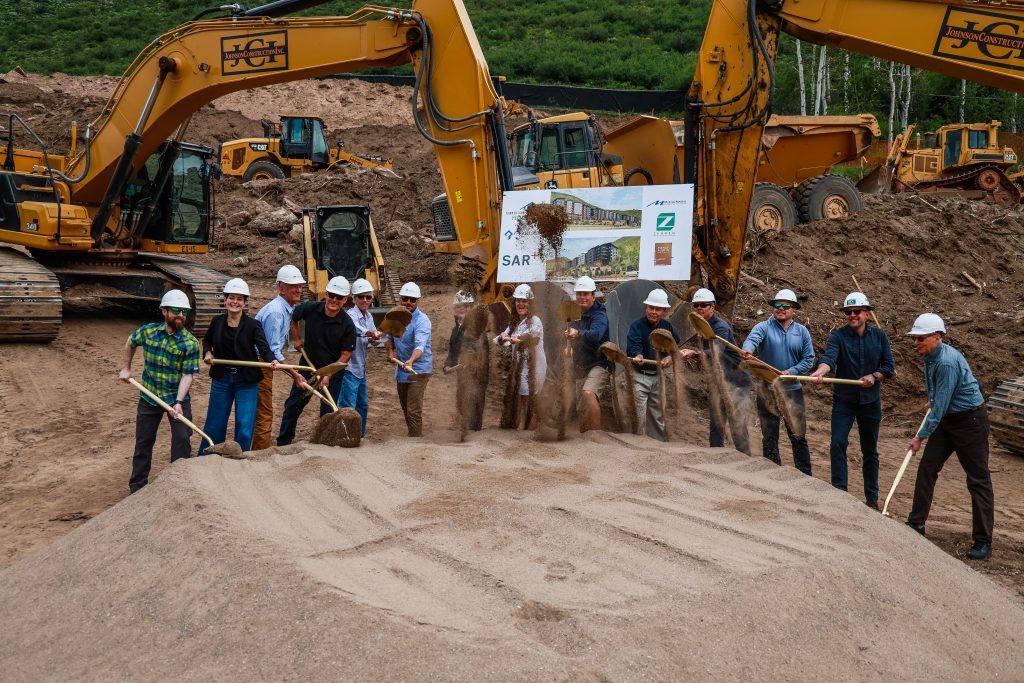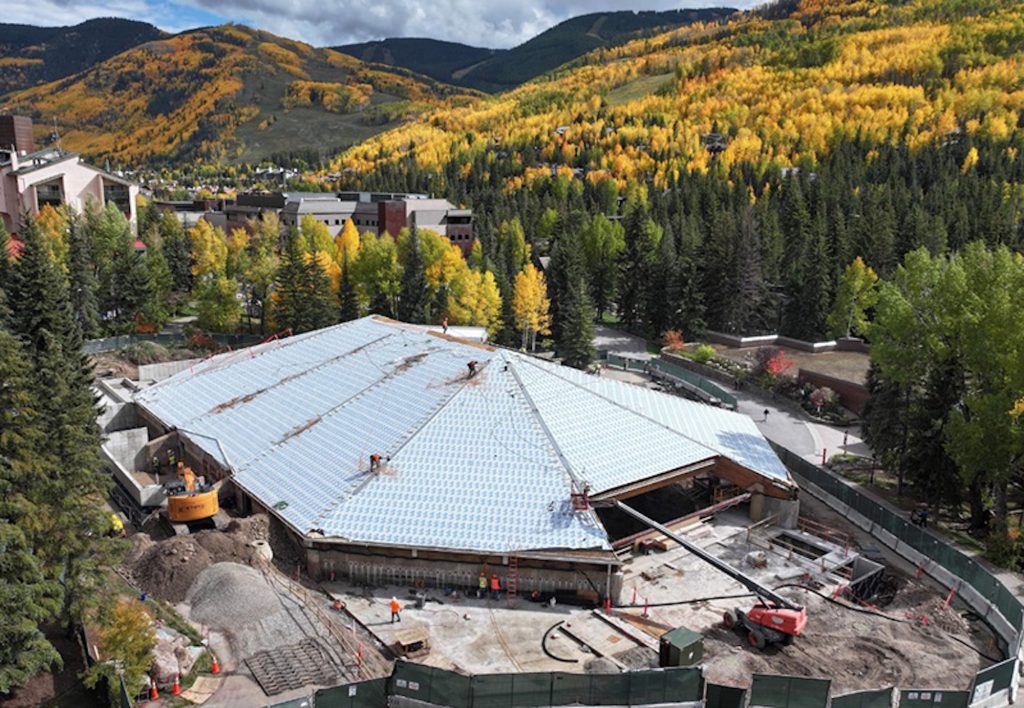Vail’s proposed 2026 budget shifts to building back reserves after making significant investments


Chris Dillmann/Vail Daily
After years of spending down reserves to fund ambitious capital projects, the town of Vail is shifting gears with its proposed 2026 budget.
Carlie Smith, the town’s finance director, and Jake Shipe, a budget analyst, presented the proposed budget to the Town Council at its Tuesday, Oct. 21, meeting. The budget charts a new course for the town as it aims to start replenishing reserves while maintaining a commitment to core municipal services and ongoing community priorities.
Smith said the town’s 2026 budget would be funded by a projected $141.9 million of net revenue across all the town’s funds. Excluding one-time revenues, net revenues total $106.2 million. The projections represent a 2.3% decrease from the 2025 forecast and a 7.1% decrease from actual 2024 revenues due to a projected decrease in investment earnings along a decrease in grant funding.
The town plans to spend $136.6 million across all funds in 2026 across three main categories: $81.8 million (60%) for municipal services, $48.9 million (36%) for capital expenditures, and $5.8 million (4%) for debt service.

Getting big projects done
The shift follows a couple of years of record-breaking investments by the town to get large projects off the ground.

Support Local Journalism
The town began a $55 million remodel of Dobson Ice Arena in April that is expected to take 18 months to complete.

The $165 million redevelopment of Timber Ridge is also well underway, with the first modulars being dropped into place in July and the first 48 homes expected to be ready for occupancy in December. The new workforce housing development will contain 302 residential options in seven different buildings when completed, ranging from studios to four-bedroom living spaces. All of the units are deed-restricted for local workers who can purchase them after verifying that they work a minimum of 30 hours per week at a business operating within Eagle County boundaries.
The town also broke ground on June 18 on another massive workforce housing project — called Southface Vail — just up the North Frontage Road from Timber Ridge between Red Sandstone Elementary School and the Middle Creek apartments. That development will deliver 268 new rental homes for locals in what is now the largest town-owned capital project in Vail’s history, at a total estimated cost of $189 million. Timber Ridge previously held the record at $165 million.
The total interest cost will be $366.7 million if the town does not refinance the debt, which will be an option in 10 years. Town officials, however, say that the cost will be fully covered by revenues generated by the project.
What if the economy goes south?
After a historic outlay of capital to reshape Vail’s future, town officials are now turning their attention to bolstering Vail’s financial safety net. Smith said the move to “start rebuilding some reserves up” is about ensuring Vail’s long-term financial health and adaptability to weather economic uncertainties and capitalize on future opportunities.
Smith outlined the town’s reserve policies, which include goals to maintain 25% of general fund revenues, which translates to approximately $17 million, and 25% of capital project funds sales tax revenues, which is a little over $4 million. The town also wants to have a minimum reserve of $2 million in its real estate transfer tax fund.
Smith also outlined the town’s recession plan, which she said can be put in place very quickly, and contains five tiers — minor, moderate, significant, major and crisis — depending on how quickly things escalate.
Mayor Travis Coggin asked Smith for a quick history lesson on how the town pivoted during the onset of the COVID-19 pandemic.
“It wasn’t automatically major,” Smith said. “I think we went to moderate first. We had five or six supplementals that year. The day after the world shut down, we weren’t waiting three weeks to make changes. Maybe it took us three weeks to come to a supplemental. But behind the scenes, we were looking at services. We weren’t signing new contracts. We were putting things in place to kind of pause and make changes immediately.”
The budget reflects an understanding of the current economic climate. Projections are cautiously optimistic, anticipating a continuation of flattening visitation.
Key revenue sources
Sales tax remains Vail’s largest revenue source, accounting for 34% of the 2026 budget. General sales tax is projected at $42.3 million, down 1.2% from 2025 forecasts but up slightly (0.4%) from 2024 collections. Other key revenue streams include real estate transfer tax ($7.8 million projected), property tax ($8.2 million projected), and the town’s tax ($6.9 million projected).
Investing in core services
While building reserves is a priority, the 2026 budget maintains a strong commitment to core municipal services. Municipal spending is budgeted at $81.8 million, with compensation accounting for the largest portion (62%). That level of spending is a reflection, Smith said, of the town’s recognition that its employees are essential to delivering a world-class experience.
Despite a 2.4% overall increase in municipal services, which is below the current inflation rate (around 3%), the budget prioritizes key areas. The biggest increases within operational expenditures are utilities and supplies, driven by rising electricity and trash removal costs, as well as the impact of inflation on supplies.
The 2026 budget also addresses personnel needs, reflecting a strategic approach to staffing. The town plans to add a total of 5.61 full-time employees that were added during 2025 and approved during the year. 5.5 of those were related to summer parking and expanded transit funded by summer parking revenues. A small .1 net full-time employee increase will happen due to some restructuring in the library and administrative services. In total, personnel expenditures are budgeted at $51.2 million, with 76% allocated to salary and 24% to benefits.
The first reading of the budget ordinance is scheduled for Nov. 4.


